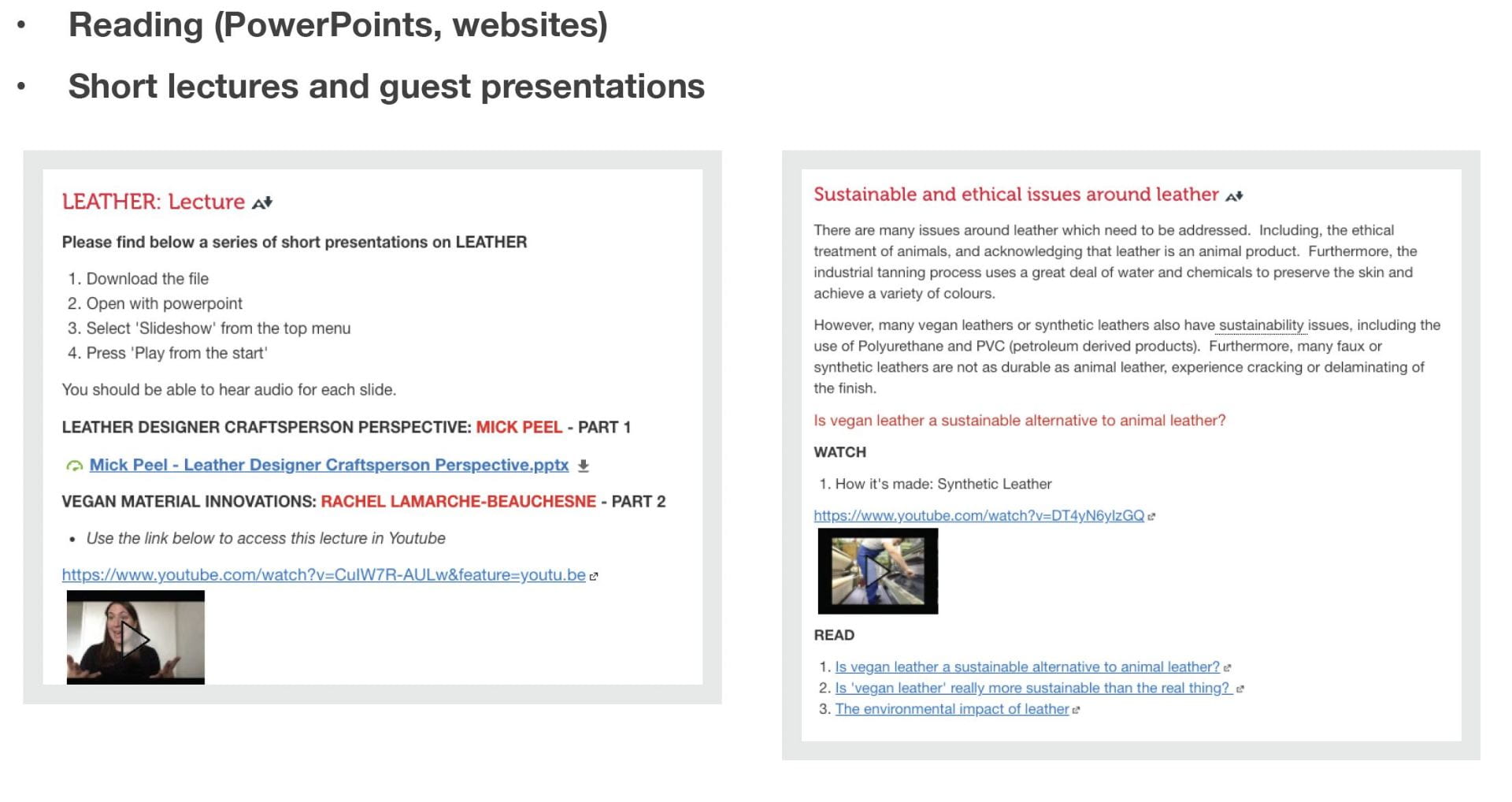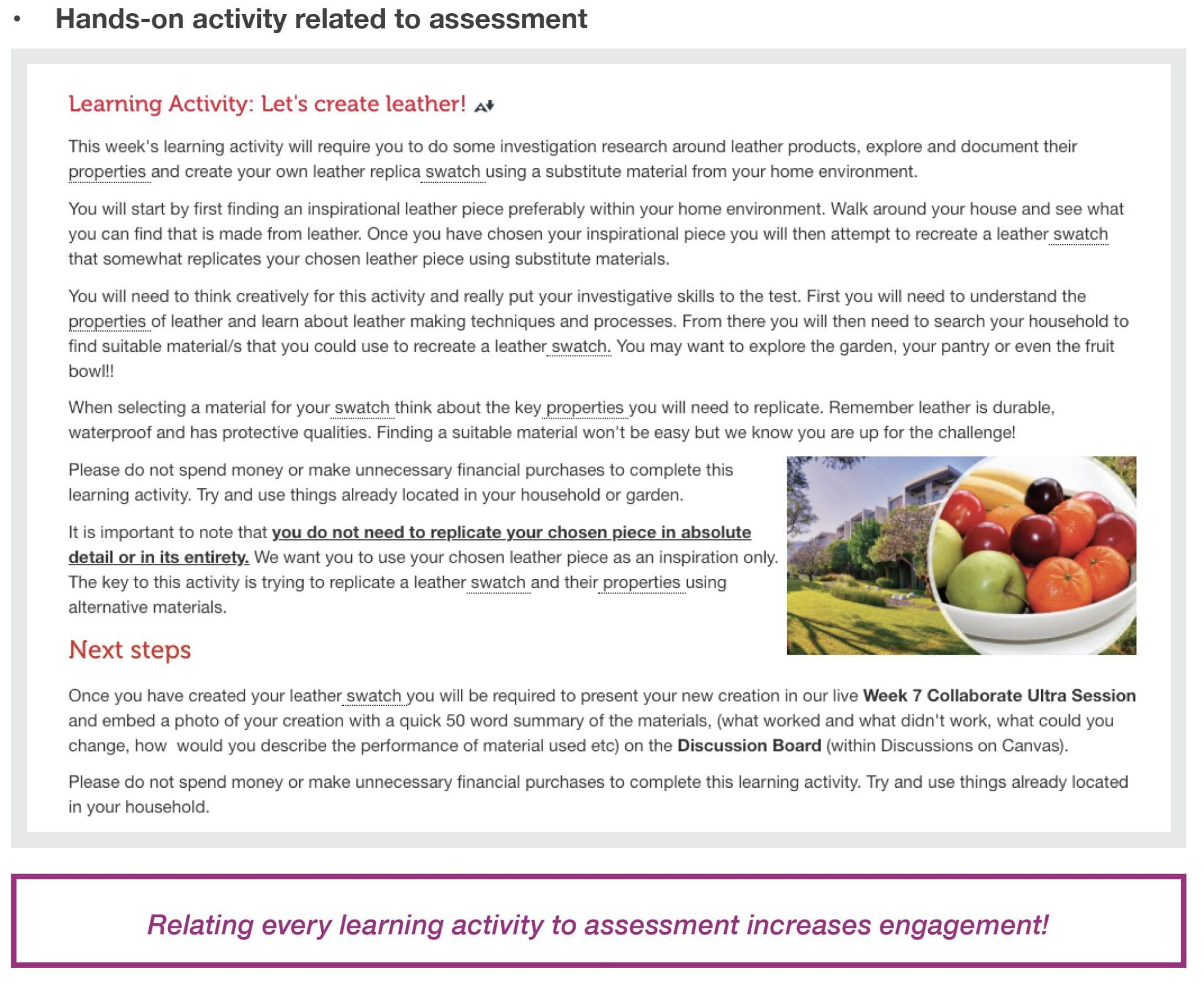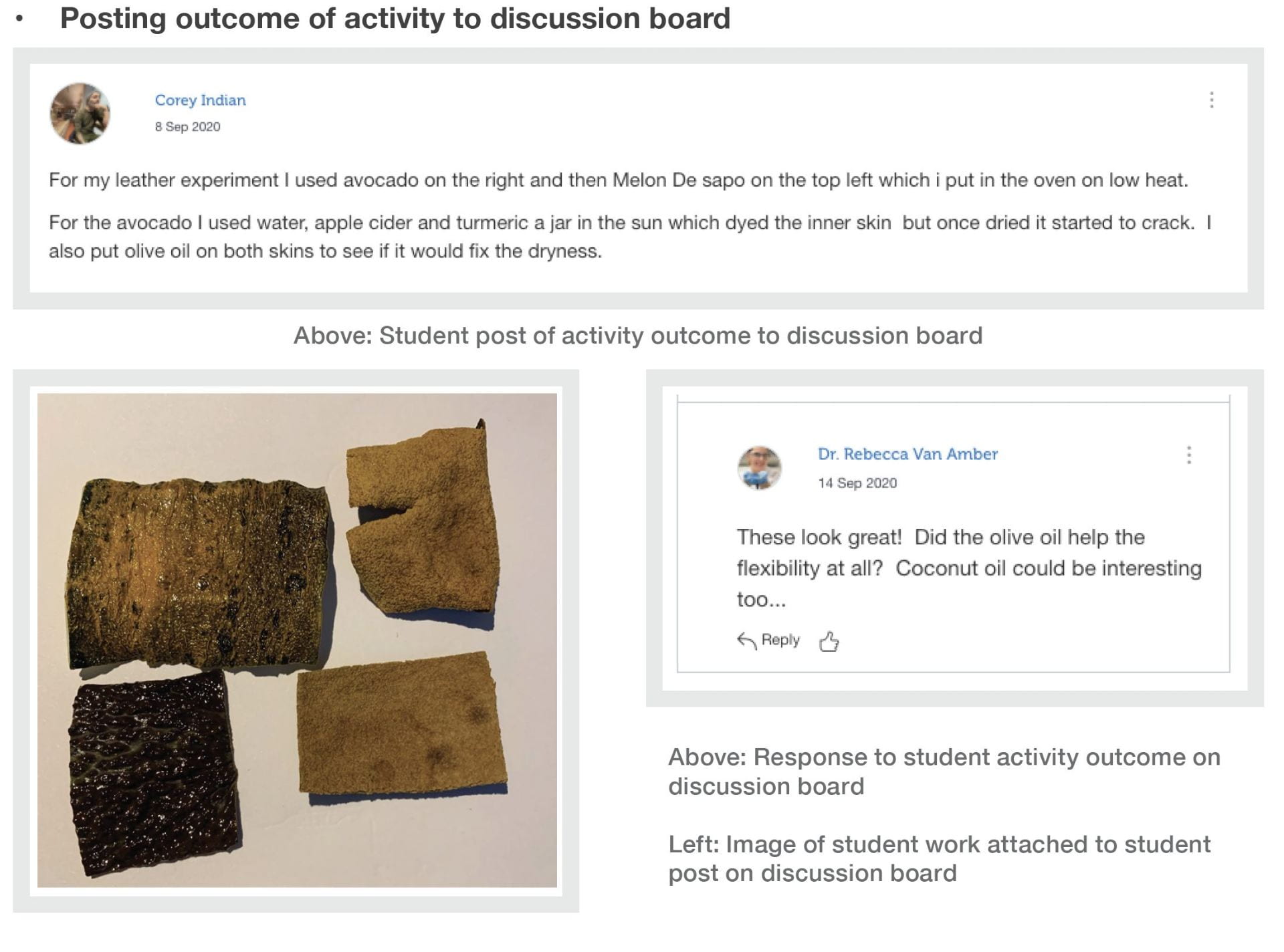Quick Snapshot
Program: This course is offered as a core course across first year of three undergraduate programs in the School of Fashion and Textiles:
The course was offered as a core course across first year of three undergraduate programs in the School of Fashion and Textiles including: BP121 Bachelor of Textiles (Design) | BP328 Bachelor of Fashion (Design) | BP326 Bachelor of Fashion and Textiles (Sustainable Innovation).
Course: GRAP2816 Fashion and Textiles Materials. This course was delivered for the first time in Semester 1, 2020.
Student cohort: First year core course across the school with approximately 170 student enrolments for Semester 1, 2020.
Teaching team: Course Coordinators, Dr Rebecca Van Amber and Sonya Kraan plus a teaching team of skilled practitioners and guest speakers.

Dr Rebecca Van Amber
Senior Lecturer Fashion and Textiles

Sonya Kraan
Associate Lecturer Fashion and Textiles
Overview
This case study outlines the design of GRAP2816 Fashion and Textiles Materials which is a school wide first-year core course within many Fashion and Textiles programs.
Textiles is a fundamentally complex topic and in response to COVID19, the team needed to work out an engaging and informative way of presenting content for an otherwise highly tactile course in a fully online space. GRAP2816 was a new course (first delivery date S1,2020) and had a large first year cohort that spread across the two disciplines Fashion and Textiles. We undertook an online pedagogical approach of a flipped classroom which involved transforming the course content into online learning modules which presented learning concepts in bite-sized pieces and incorporated a blend of teaching and assessment tools including video clips, direct instruction, learning activities, gaming elements and knowledge quizzes. We strategically choose appropriate interactive elements to encourage learner engagement.
Engagement and participation in learning activities were extremely high with over 128 entries (cohort of 168) posted to the Canvas discussion board and up to 109 comments. The success of the discussion boards contributed to positive and active engagement of teaching staff with various tutors and lectures responding to students’ posts. This participation had a snowball effect with more students posting and engaging with their peers. The formula proved successful for GRAP2816. Students each week had to present their learning activity creation to peers in a live Collaborate Ultra session, which often formed the ice breaker at the beginning of each session.
Recent Canvas analytics show impressive student engagement and participation rates for GRAP2816 including the following statistics: Course Home Page: 35.3k page views | Course Modules: 12.8k page views | Course Assignments 6.2K | Learning Activity: Create a non-woven 968 page views. The course delivery of GRAP2816 is now the subject of research with a view to publication on the success of adapting studio-based learning methods to the online environment.
Flipped Learning Approach
Our main learning and teaching approach for this course was the flipped classroom method. Based around weekly modules developed online via Canvas, students complete the modules to help prepare for their tutorials. Each module consisted of reading, watching, listening and a hands-on learning activity aligned to assessment tasks. The structure of the module began with an introduction outlining the aims of the week, content overview, associated course learning outcomes and learning materials.
“Each learning activity contained an explanation as to how it aligned to the assessment task. We found this improved engagement with the course in general.”
Students were asked to share learning activity outcomes on the Discussion board before attending class. We maximised engagement with the discussion board by having ALL teachers interact with students. The teachers would like the student posts, provide feedback and provoke further thinking points. Following the main module content, a page was included outlining learner directed expectations ‘Staying on Track’ and a brief overview of the week to come. We had 7 individual tutorial groups and sharing information this way really kept it consistent across staff and students.
“Overall page view metrics from some students showed access to the Canvas Shell exceeding 2000 times during the semester.”
The Online Lectures
Each week we recorded a series of short lectures (8–12 mins) by capturing audio within PowerPoint presentations, then uploading as a short module to Canvas. We received positive feedback on these as they were short and consumable. We also invited ‘guests’ (experts in their field) to deliver some of the lectures which allowed more ‘voices’ to feed into the course. Some of the constructive feedback we received related to the release of the modules. Students requested that we release all the content for the week in one large module (lecture, learning activity and other resources). We took this on and began doing that from Semester 2, 2020 on and it was much more successful.
The Collaborate Ultra Tutorials
Online tutorials ran for 2 hours with an extra hour at the end for students to seek feedback on their work or talk to their tutor directly. We mainly used the tutorials as an active sharing time where students could share the work completed prior to the class and to engage in discussions. The aim was to maximise the class time and allow the tutor (and peers) develop deeper connections between the theory and practice. When it came to sharing outcomes during the Collaborate Ultra sessions, students felt more comfortable when put into groups of 5 to share their outcomes with peers before speaking to the larger group. Similarly, to face-to-face delivery we found that in the online environment, students gained a lot of reassurance by viewing the work of others.
An example week
Weekly pre-tutorial module (Canvas)
Tutorial (Collaborate Ultra or On-campus)
- 2-hour tutorial – Share pre-class work and make deeper connections between theory and practice with peers and tutor. Small groups share first then move to larger group.
- Extra 1-hour following tutorial – Students can seek feedback or talk to tutor. Hands-on activity related to assessment

Benefits



